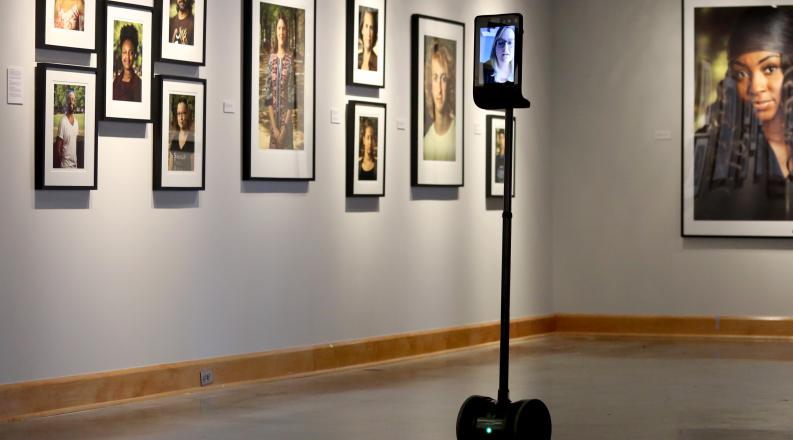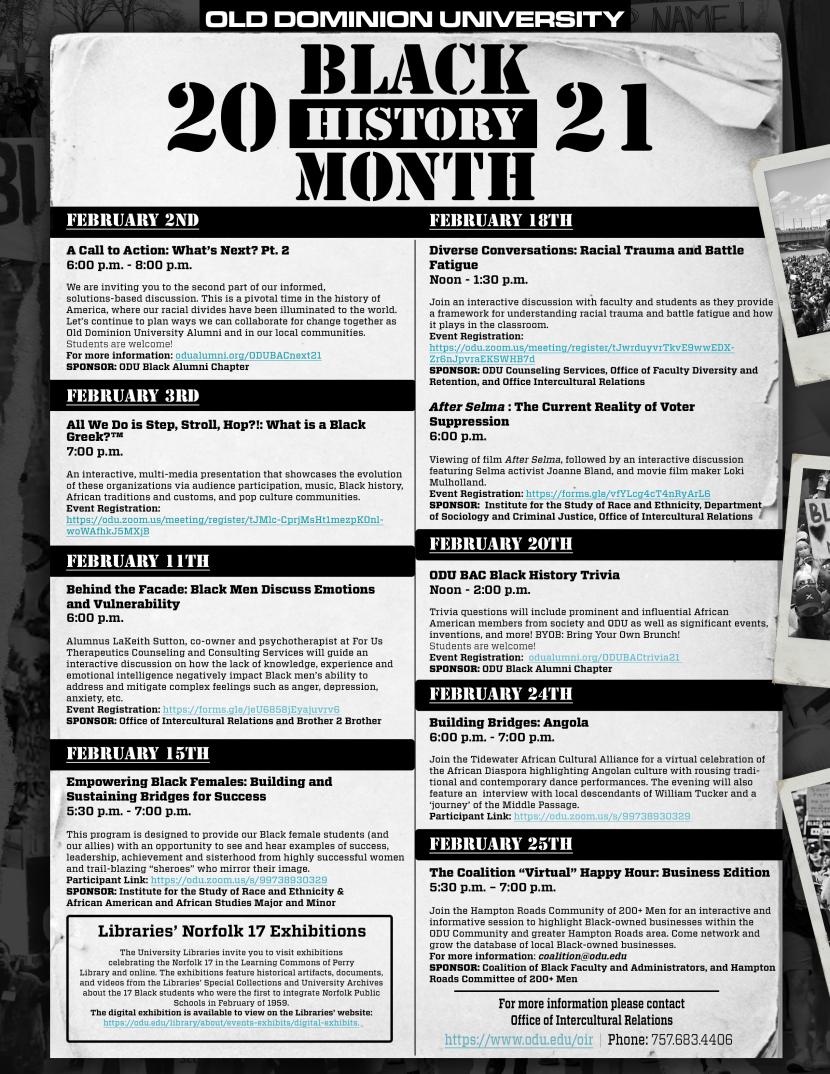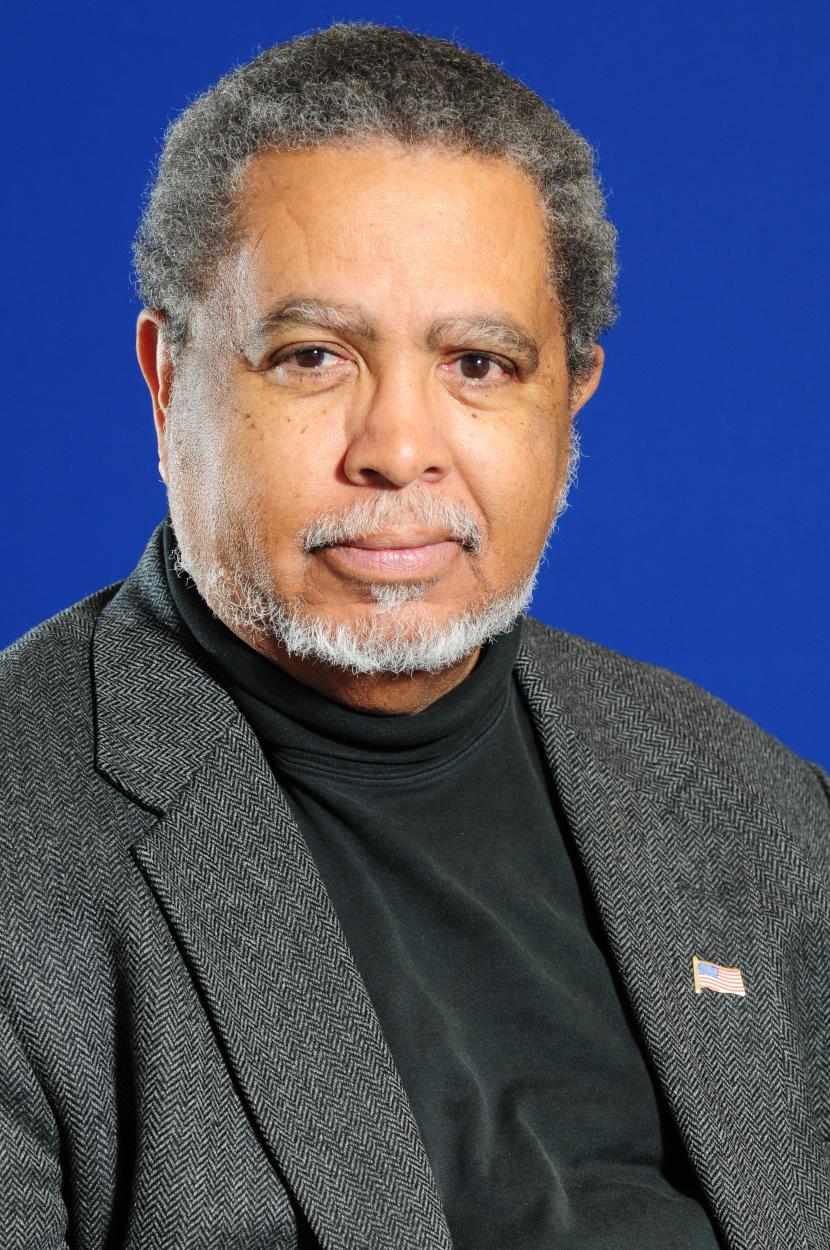By Amy Matzke-Fawcett
The Baron and Ellin Gordon Art Galleries on Monarch Way has a new team member - but it's unlike any previous staffer.
"Gordon," named after the couple who donated many works to the permanent collection, is a robot. It's a telepresence robot to be exact, meaning it can be remotely controlled by users from anywhere with a high-speed internet connection.
The robot will be linked to Arts@ODU's online ticketing system, so users will reserve a time slot to operate Gordon. The cost of a 60-minute reservation for the general public is $15, $10 for ODU faculty and staff, and $5 for ODU students.
Gordon offers an innovative way to expand access when COVID-19 precautions have kept most people at home, and visitors to the galleries have been limited for safety, said Cullen Strawn, executive director for the arts at Old Dominion University.
"As a telepresence robot, it's a stand-in for individuals or groups of people who are physically distant from the galleries," Strawn said.
The interface is hooked into the University's WiFi system, allowing remote users to drive the robot around gallery spaces using their computer's mouse and keyboard. The remote user's face appears on a screen so they can interact with others in the gallery or ask questions of staff. The screen can be raised or lowered to better see the displayed works, and there are options for mixed reality, with dots showing where a user can drive Gordon, or a truer gallery experience without the guides onscreen.
Additionally, sensors ensure users don't accidentally drive Gordon at unsafe speeds or bump into walls, people or sculptures. It's possible to drive the robot using smaller devices, such as tablets or phones, but the experience is richer on a laptop or desktop, Strawn said.
Although Gordon's first use will be to allow safe access to the galleries during the COVID-19 pandemic, Strawn envisions uses after precautions have been lifted. In fact, the idea to bring a telepresence robot to the Gordon Galleries occurred to him after remembering a similar setup at a talk he'd given a few years ago that had allowed someone from South America to participate in his presentation.
"I can think of so many uses for this robot in the arts alone, and I hope we could obtain more robots later," Strawn said. "Having Gordon meets many of the university's goals of access, inclusion and equity."
A telepresence robot allows the user a more robust experience, one more like an in-person experience than an online meeting like Zoom or an online tour, said Yvette Pearson, professor in the Department of Philosophy and Religious Studies. Although her research focuses on robot ethics, including ethical issues surrounding their use in health care and therapeutic settings, she said telehealth and gallery visits via telepresence robots share plenty of similarities, especially in terms of expanded access.
Outside of the pandemic-era uses, telehealth robots are often used to engage with people who are homebound due to limited mobility and transportation issues - the same challenges a person with limited mobility faces when visiting an art gallery.
She recently test-drove Gordon from home while chatting with Strawn, who was in the gallery.
"It was closer to an in-person interaction, and it felt more like being there in person because you're navigating the room with an assistive device, but navigating the room all the same," Pearson said.
The robot could allow school groups and art enthusiasts to remote in from anywhere with a high-speed internet connection, and can lead to more accessible events and talks long term. To find out more about Gordon or book a time to pilot the robot, visit Arts @ ODU website.






